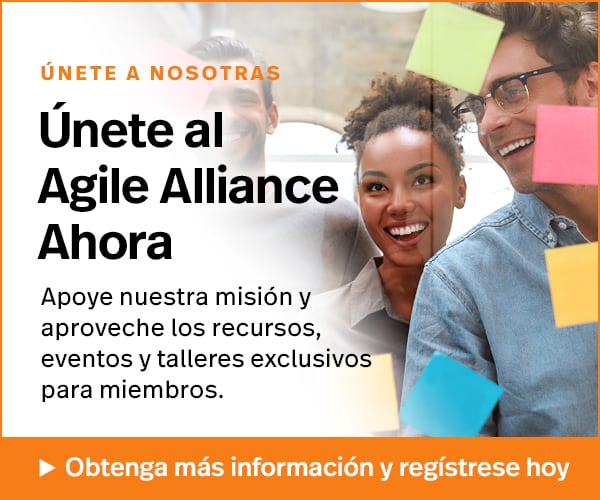Tuve el grato placer de entrevistar a Martín Poncio quien es argentino y psicólogo de formación. Martín se ha venido desempeñando como Agile Coach por varios años y desde hace un tiempo como Head Of Agile Practice Center en DIRECTV Latinoamérica.
Martín comenzó contando que la empresas que actúan en el mundo digital necesitan tener una estructura flexible que acompañe las necesidades cambiantes de sus clientes, estructura que a la vez debe estar orientada a generar valor. Martín continuó diciendo que tal estructura flexible no es más un deseo sino una necesidad, y es precisamente esta necesidad la que acaba detonando la urgencia del cambio dentro de las empresas.
En caso de DIRECTV el cambio comenzó por darse cuenta donde estaban los puntos de dolor que tenían los clientes al interactuar con la empresa, en ese camino la empresa se dio cuenta de la necesidad de sumar conocimiento en el campo de la digitalización y fue ahi donde empezaron a sumar nuevos empleados con conocimiento y habilidades relacionadas al mundo Agil, contó Martín.
Martín mencionó que uno de los grandes desafíos que ahora enfrenta su empresa es mantener y expandir los buenos resultados alcanzados por unos pocos equipos hacia más equipos y áreas dentro de la empresa. Martín mencionó algo muy interesante que es el sostener el cambio orgánico versus el introducir el cambio prescriptivo que acaba generando tensiones. Martín también comentó que la capacidad de adaptación de las empresas viene de la mano de su capacidad de aprendizaje y es ahi donde el cambio orgánico ofrece más desafíos y oportunidades.
Martín citó a un psicólogo famoso que describió el proceso de aprendizaje, proceso que tiene tres esferas: la primera es lo que persona sabe hacer, la segunda es la persona puede hacer con ayuda, y la tercera es la que la persona no puede hacer. La zona de desarrollo próximo está entre lo que la persona sabe hacer y lo que la persona puede hacer con ayuda. Este proceso de aprendizaje es relacional y es la clave de a lo que se refiere Martín con crecimiento orgánico, es decir, cómo hacer que la persona que sabe transmita el conocimiento en lugar de solo hacer el trabajo directamente. Martín puntualizó que no es que las empresas son las que aprenden, en realidad son las personas las que deben aprender y por tanto se necesita un modelo orgánico que abrace ese curva de aprendizaje.
Citando números Martín contó que el proceso de transformación empezó con cincuenta personas que es poco si consideramos que DIRECTV tiene seis mil empleados, pero fueron precisamente esos cincuenta los que ayudaron a propagar y defender el cambio dentro del resto de la empresa. Yendo más allá Martín comentó que el cambio se inicio por reentrenar a las personas pero aparte de eso se debe pensar en rodearlas de talentos que les puedan enseñar nuevas habilidades y despertar potenciales, esto según Martín ayuda no solo a sostener el cambio orgánico sino a acelerarlo.
Martín aportó una reflexión muy interesante cuando dijo que el 90% de las gente que hace software para DIRECTV son proveedores externos y que eso en lugar de ser un riesgo se puede convertir en una ventaja desde el momento que se mira a los proveedores como personas, se las entrena, se las valora y se las hace parte del proceso creativo de generación de valor. Tal como en el Manifiesto Agil se habla de personas y no recursos, los proveedores deben ser vistos también como personas, dijo Martín.
Martín comentó que cuando una empresa piensa en transitar el camino de la Agilidad debe pensar en términos de una cadena de valor, cadena en la cual siempre se irá a la velocidad del eslabón más lento. Es precisamente el hacerse cargo de esos eslabones más lentos y los factores que generan esa lentitud que hará que el proceso de transformación sea más profundo en una empresa, dijo Martín.
Martín hacia una reflexión muy interesante cuando decía que el talento que se incorpora de afuera es el que marcará el nuevo techo, y que por tanto había que ser muy quirúrgico a la hora de incorporar gente nueva. Hablando de cosas que funcionaron o no en la experiencia de Martín el decía que no funcionó el poner gente muy junior en lugares que requieran alto conocimiento, y sí funcionó bien el tener Scrum Masters que eran empleados de la misma empresa.
Para cerrar Martín ofreció un consejo para la empresas que quieran iniciar el camino hacia la transformación, el consejo es invertir en talento, tomarse el tiempo para seleccionarlo y desarrollarlo pues este talento no solo dará grandes resultados sino que atraerá a gente valiosa.
English Summary
I had the great pleasure of interviewing Martín Poncio, who is an Argentine and a trained psychologist. Martín has been serving as an Agile Coach for several years and for some time as Head Of Agile Practice Center at DIRECTV Latin America.
Martín began by stating that companies that operate in the digital world need to have a flexible structure that accompanies the changing needs of their customers, a structure that at the same time must be oriented to generate value. Martín continued by saying that such a flexible structure is no longer a desire but a need, and it is precisely this need that ends up triggering the urgency of change within companies.
In the case of DIRECTV, the change began by realizing where the pain points that customers had when interacting with the company were, in that way the company realized the need to add knowledge in the field of digitization and it was there that they began to add new employees with knowledge and skills related to the Agile world, said Martín.
Martín mentioned that one of the great challenges his company now faces is maintaining and expanding the good results achieved by a few teams to more teams and areas within the company. Martín mentioned something very interesting, which is sustaining the organic change versus introducing the prescriptive change that ends up generating tensions. Martín also commented that the adaptability of companies comes hand in hand with their ability to learn and that is where organic change offers more challenges and opportunities.
Martín quoted a famous psychologist who described the learning process, a process that has three spheres: the first is what a person knows how to do, the second is what the person can do with help, and the third is what the person cannot do. The zone of proximal development is between what the person knows how to do and what the person can do with help. This learning process is relational and is the key to what Martín refers to with organic growth, that is, how to make the person who knows transmit the knowledge instead of just doing the work directly. Martín pointed out that it is not that companies are the ones that learn, it is actually the people who must learn and therefore an organic model is needed that embraces that learning curve.
Citing numbers, Martín said that the transformation process began with fifty people, which is not enough if we consider that DIRECTV has six thousand employees, but it was precisely those fifty who helped spread and defend the change within the rest of the company. Going further, Martín commented that the change began by retraining people, but apart from that, it is necessary to think about surrounding them with talents that can teach them new skills and awaken potentials.This, according to Martín, helps not only to sustain organic change but also to accelerate it.
Martín contributed a very interesting reflection when he said that 90% of the people who make software for DIRECTV are external providers and that instead of being a risk it can become an advantage from the moment that providers are seen as people, They are trained, valued and made part of the creative process of value generation. Just as the Agile Manifesto talks about people and not resources, providers must also be seen as people, Martín said.
Martín commented that when a company thinks about walking the Agile path, it must think in terms of a value chain, a chain in which it will always go at the speed of the slowest link. It is precisely taking charge of those slower links and the factors that create that slowness that will deepen the transformation process in a company, Martín said.
Martín made a very interesting reflection when he said that the talent that is incorporated from outside is the one that will mark the new ceiling, and that therefore it was necessary to be very surgical when incorporating new people. Speaking of things that did or did not work in Martín’s experience, he said that it did not work to put very junior people in places that require high knowledge, and it did work well to have Scrum Masters who were employees of the same company.
For closing, Martín offered advice for companies that want to start the path to transformation, he advised to invest in talent, take the time to select it and develop it because this talent will not only give great results but will attract valuable people.
Sobre el Autor: Juan Banda
Juan se especializa en entrenar, mentorear y hacer coaching de equipos Agiles para que en corto tiempo puedan alcanzar resultados asombrosos. Juan es también un agente de cambio que ayuda a que empresas completas vuelquen sus prácticas hacia formas más humanas de trabajo. Juan es un Certified Scrum Trainer (CST) y LeSS Friendly Scrum Trainer. Su formación universitaria incluye un grado de Magister en Administración de Sistemas de Información conferido por The University of Illinois at Chicago.






